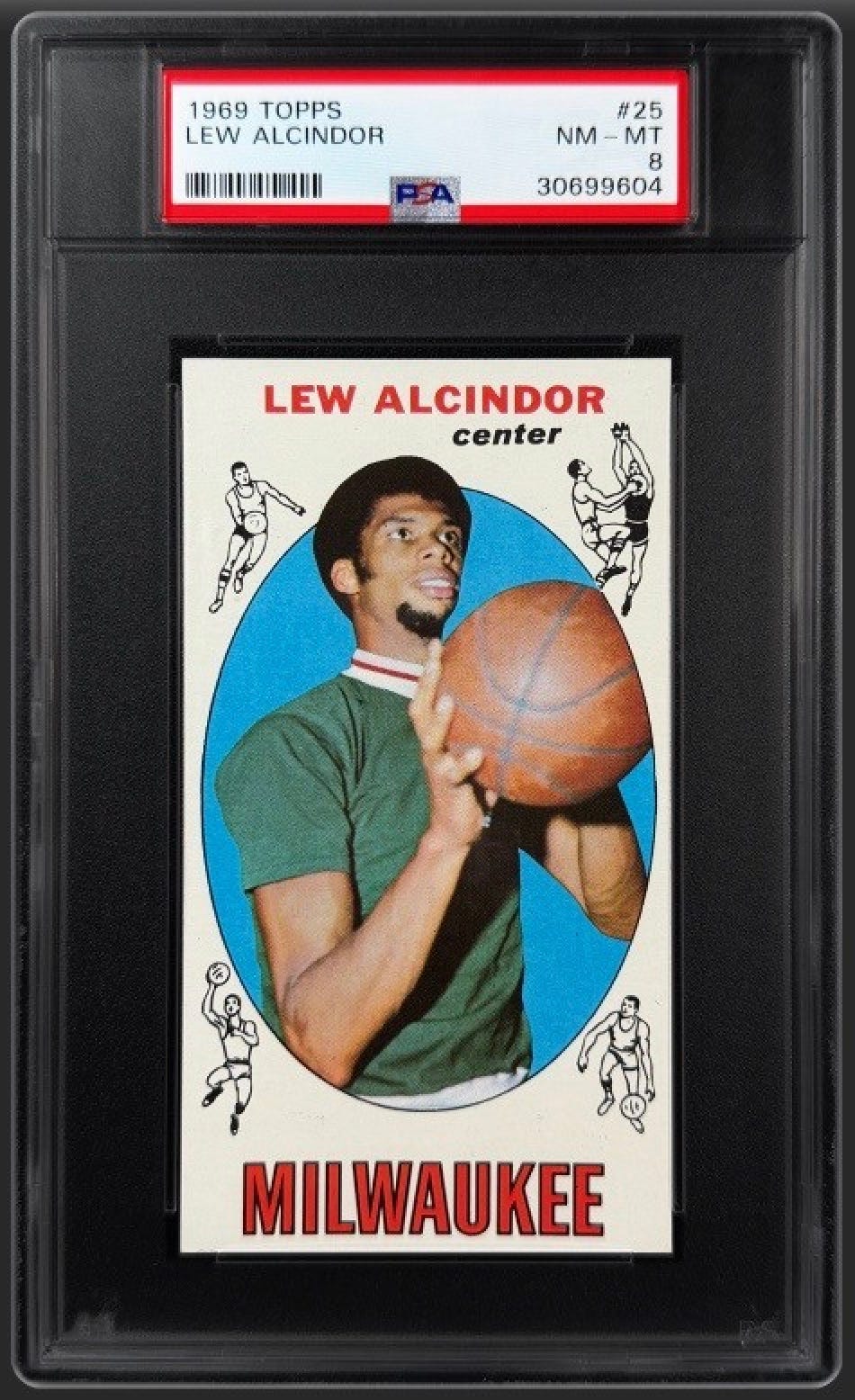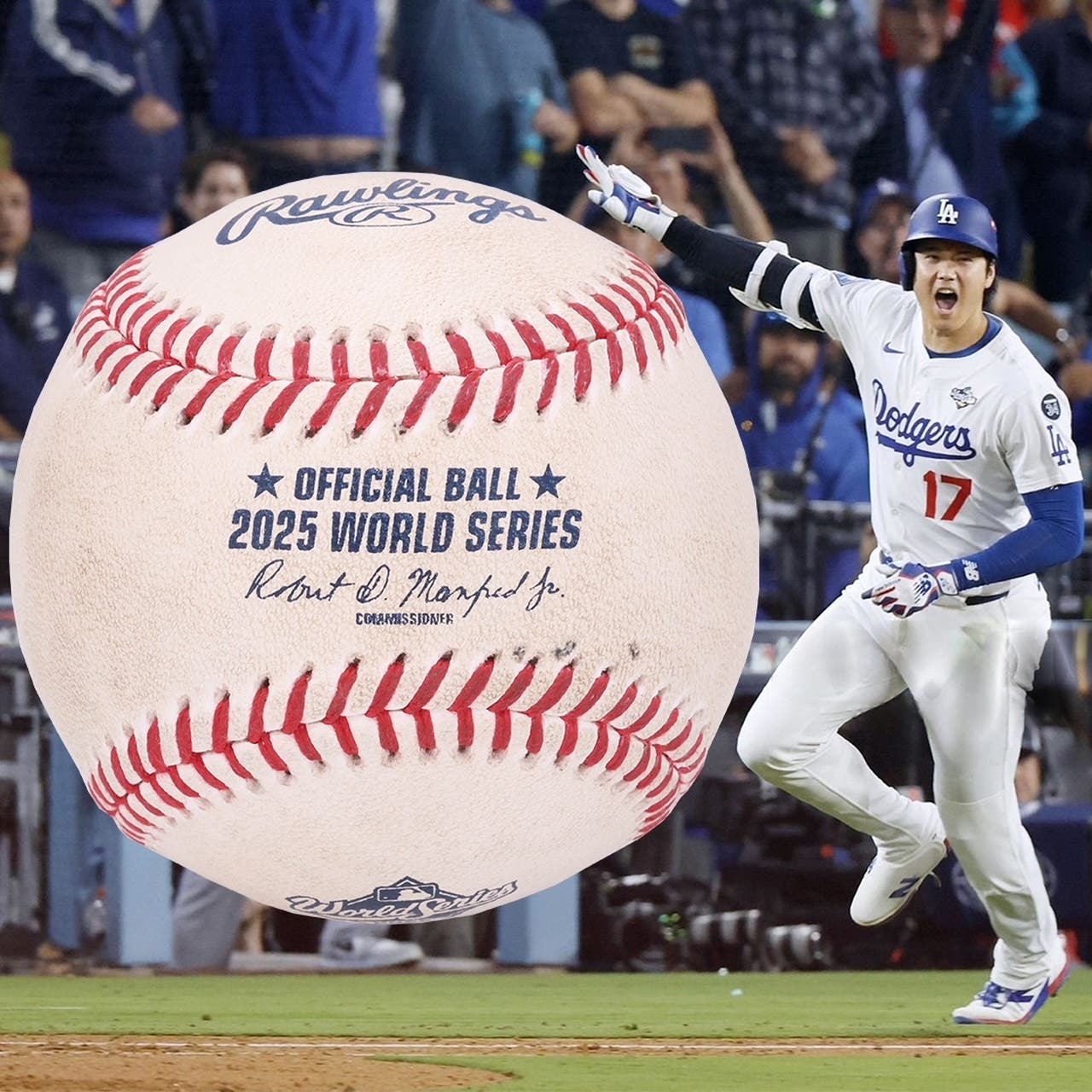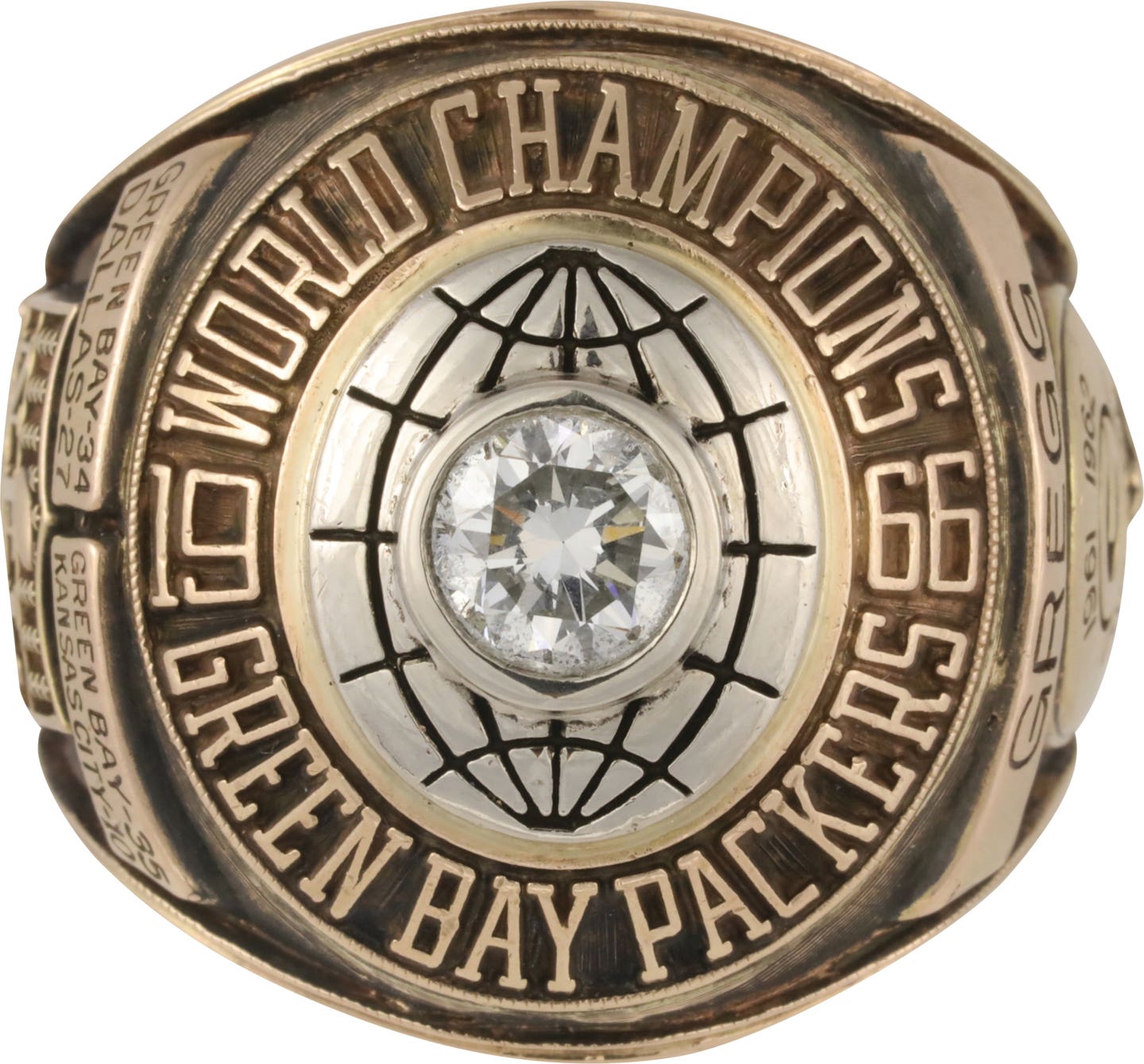Collector Stories
Red Grange: Ghostly Hollywood Memorabilia
He was the fabled “Galloping Ghost,” a rampaging dynamo who graced the football gridiron from the so-called “Golden Age of Sport.” A three-time All-American at the University of Illinois and a Hall of Famer for the Chicago Bears, Red Grange was larger than life, a football legend whose talents on the field eventually led him to the silver screen of Hollywood.
Making of a sports star
Harold Edward “Red” Grange was born in Forksville, Pa., on June 13, 1903. Following the death of his mother in 1908, Grange’s family moved to Illinois, where he became a standout athlete at Wheaton High School just west of Chicago, earning 16 out of a possible 16 varsity letters in football, baseball, basketball and track.
As a junior, a season in which the gridiron Tigers outscored their opponents 418-71, Grange put up some impressive numbers, finishing with 36 touchdowns and 39 PATs for a total of 255 points. When his incredible prep football career finally came to an end in the fall of 1921, the Wheaton Illinoisan observed, “As for Grange, who has played his last football game for Wheaton High, he cannot be replaced, because a competent successor hasn’t been born yet.”
Grange, who worked several summers delivering ice to help out with the family finances (hence his alternate nickname the “Wheaton Iceman”), enrolled at the University of Illinois in 1922. Playing for coach Bob Zuppke’s Fighting Illini, Grange continued his winning ways, earning first team All-American honors as a hard-charging sophomore running back in 1923. In a tribute to the young halfback following a 7-0 win over the University of Chicago before 61,000 fans at Illini Stadium, the Associated Press had termed Grange “Zuppke’s phantom pile driver,” while sports columnist Irving Vaughan of the Chicago Tribune had called Red “a wild man afoot; a veritable whirlwind of activity.”
One of Grange’s most incredible collegiate performances – aka “the stuff of legend” – came on Oct. 18, 1924, during a game against Michigan at newly opened Memorial Stadium in Champaign, Ill. Here, Grange electrified the home crowd, returning the opening kickoff for a 95-yard touchdown and subsequently scoring TDs on runs of 67, 56 and 45 yards – all in the course of the first 12 minutes. Sitting out the second quarter, Grange returned for the second half, where he added another two touchdowns to his tally.
Before his collegiate career came to an end in 1925, Grange (nicknamed “The Galloping Ghost” by sportswriter Warren Brown of the Chicago American) had earned All-American honors three consecutive years. That same year, Illinois retired his fabled No. 77 jersey. Only one other alumnus, Dick Butkus (No. 50), has accorded such an honor since. On Oct. 5, 1925, Grange earned another tribute, appearing on the cover of Time magazine.
Grange continued his football career in the professional ranks, signing with George Halas’s Chicago Bears the day after his final college game. Grange and the Bears then set out on a grueling 67-day coast-to-coast barnstorming tour, playing 19 games and giving professional football (then a second banana to the more popular collegiate version) a badly needed shot in the arm. In a Dec. 6, 1925, contest pitting the Bears against the New York Giants, more than 70,000 fans packed the Polo Grounds, with many of them specifically on hand to witness Red Grange in action. The Bears won, 19-7, with Grange scoring a touchdown on a 35-yard interception return.
When Grange’s agent, C.C. Pyle, and the Bears ownership failed to come to terms for the 1926 season, Pyle formed the rival American Football League, with the New York Yankees and its star Red Grange as the prime attraction. Although the new AFL (the league’s other teams included the Boston Bulldogs, Brooklyn Horsemen, Chicago Bulls, Cleveland Panthers, Newark Bears, Philadelphia Quakers, Rock Island Independents and Los Angeles Wildcats) closed its doors after only one season, Pyle was allowed to move his more successful Yankees to the National Football League. During a game against the Bears in 1927, however, Grange severely injured his knee.
“I didn’t play at all in 1928,” Grange recalled of his crippling injury. “I was just an ordinary ball carrier after that. I did develop into a pretty good defensive back, however.”
Grange returned to the Bears in 1929, later playing in the first official NFL Championship Game of 1933, in which the Bears defeated the New York Giants, 23-21, to claim the title before 26,000 fans at Wrigley Field in Chicago.
Grange retired from pro football following the 1934 season. He later worked at a variety of jobs, including motivational speaker, insurance salesman and sports announcer. A charter member of both the College and Pro Football Halls of Fame, Grange died at age 87 in Lake Wales, Fla., on Jan. 28, 1991.
Hollywood beckons
Pyle (1882-1939), the flamboyant sports promoter and personal manager who had arranged Grange’s famous barnstorming tour of 1925-26, had also recognized the potential of his famous client as a screen personality. If Grange could pack ’em into football stadiums, Pyle reasoned, then surely he could do the same for movie theaters, of which C.C. (aka “Cash and Carry”) coincidentally managed a chain of them.
Pyle, of course, smelled more money – both for himself and his famous client – hoping that Grange’s film career would prove to be every bit as successful as the barnstorming tour, which had reportedly earned Grange more than $125,000 in both salary and a percentage of the gate receipts.
Pyle secured a motion picture contract for his No. 1 client with the Film Booking Offices of America Inc. (FBO), an outfit acquired in February 1926 by a group of investors led by Joseph P. Kennedy, the father of the future president John F. Kennedy. For his first movie, Grange would be paid a then-staggering sum of $300,000, with the football star laying down certain conditions regarding his big-screen debut.
“I don’t want to play a sheik part,” Red announced in an obvious reference to silent film star Rudolph “The Sheik” Valentino. “This business of lollygagging around with a girl most of the time, as movie actors usually do in all the pictures I’ve seen, is not in my line.”
Not surprisingly, Grange was cast in a movie more to his liking, or in his “line” – that of a college football player in an eight-reel silent titled One Minute to Play. Written by Byron Morgan and directed by Sam Wood, One Minute to Play was filmed on location at Pomona College in Claremont, Calif. Heading the cast was Grange as Red Wade, with Mary McAllister, Charles Ogle, George Wilson (the great University of Washington football star), Ben Hendricks Jr., Lee Shumway, Al Cooke, Lincoln Stedman, Jay Hunt, Edythe Chapman and even King Tut the Dog lending support. Also appearing as an uncredited extra in the film was 25-year-old Clark Gable.
One Minute to Play features Grange as a young man who heads off to college. While en route to Claxton University to begin his studies, Red becomes involved in a free-for-all fight aboard the train and arrives at Parmalee College instead. After initially promising his father that he wouldn’t go out for football but solely concentrate on academics, Grange has a change of heart and joins the squad. During the annual Parmalee-Claxton football rivalry, Red’s gridiron-hating father undergoes a conversion, becoming a diehard fan just in time to witness his son score the winning touchdown.
Opening in New York City on Sept. 5, 1926 (with Grange making a personal appearance at the Colony Theater following the film’s debut), One Minute to Play was not a big hit at the box office, but it did garner some good reviews.
“In his first screen touchdown ‘Red’ Grange demonstrated his ability to tackle the role of a college hero and portray it far more convincingly than most of those handsome young men who are thoroughly accustomed to greasepaint and facing the camera,” reported Mordaunt Hall in The New York Times (Sept. 6, 1926). “Mr. Grange’s performance is pleasingly natural, and it is agreeable to observe that he has not copied the conventional tactics of the ordinary movie actor . . . The idea that he is actually a football player adds to the thrill of this gridiron story.”
Grange returned one year later in another FBO release titled The Racing Romeo, a seven-reel silent. This time, the sport was automobile racing, with Grange playing a character named Red Walden. Once again written by Byron Morgan and directed by Sam Wood, The Racing Romeo also featured Jobyna Ralston as Red’s love interest Sally, Trixie Friganza, Walter Hiers, Ben Hendricks Jr., Warren Rogers, Ashton Dearholt and Marjorie “Jerry” Zier.
Unlike his first movie venture, where he publicly disdained the mandatory use of greasepaint on his lips for the benefit of the cameras, Grange thoroughly enjoyed making The Racing Romeo. Already an automobile buff who thrilled in pushing his Stutz Bearcat to speeds of 100 mph over the back roads of Illinois, Grange readily jumped into filming out in Hollywood. Although director Wood successfully vetoed any idea that Grange would do his own stunt driving (that was mostly handled by professional drivers Cliff Bergere, Stubby Stubblefield and Ernie Triplett), Grange did manage several unscheduled visits to the track during off-hours, taking his turn behind the wheel of the various souped-up racers that had been assembled for the picture.
Released on Sept. 1, 1927, The Racing Romeo was billed as a comedy-drama, with Grange portraying a freewheeling race car driver whose off-track interests extend to pretty Jobyna Ralston, and the attendant complications that go with such a movie romance. A fun, lighthearted film, The Racing Romeo no doubt thrilled many of Grange’s football fans, who marveled at his exploits on the race track, even though the famous redhead wasn’t doing the actual daredevil driving.
Grange’s third and final film came in 1931 via a 12-part serial appropriately titled The Galloping Ghost. Produced by Mascot Pictures, the serial starred Grange (finally) as himself, with Dorothy Gulliver, Tom Dugan, Gwen Lee, Ralph Bushman (aka Francis X. Bushman Jr.), Theodore Lorch, Walter Miller, Edward Hearn, Ernie Adams, Tom London, Lon Chaney Jr. (in an uncredited role of a henchman) and many others in support. The storyline revolves around a gambling ring run out of the Mogul Taxi Co. whose ringleaders are intent on fixing college football games. Caught up in this scheme are Grange and his friend Buddy Courtland (Bushman), who play football for Clay College.
Filmed in Los Angeles, the first chapter, “The Idol of Clay” (whose cliffhanger features Grange falling out of an airplane), was released to theaters on Sept. 1, 1931. In the ensuing 11 weeks, the other chapters followed, with the serial ending with “The Ghost Comes Back.”
Ghostly celluloid collectibles
“This man Red Grange of Illinois,” wrote Damon Runyon, “is three or four men rolled into one for football purposes. He is Jack Dempsey, Babe Ruth, Al Jolson, Paavo Nurmi and Man o’ War. Put together, they spell Grange.”
With that kind of hype, written before he ever set foot in a pro football stadium, embarked on one of his barnstorming tours, made a product endorsement, adorned a store display promoting his own 5-cent candy bar or graced the silver screen of Hollywood, it’s little wonder that Grange remains one of the most popular figures in the history of sport. That popularity, of course, is no more evident than in the sports memorabilia field, with collectors pursuing all matter of Grange artifacts, including those coveted items from his Hollywood days.
The biggest catch for Grange aficionados would be the rare one-sheet poster (27-by-41 inches) from his first film, One Minute to Play. This paper artifact, however, has proven to be about as elusive to collectors as “The Ghost” was to would-be tacklers. If one were to encounter this rarity, an estimated value of $3,000-$5,000 or more, depending on condition, would not be out of the ballpark.
More “common” is the window card (14-by-22 inches) from One Minute to Play. Window cards – so named because they were displayed in the windows of business to promote a film – feature excellent graphics, with the name of the local theater often etched at the top. One window card from One Minute to Play in Fine condition sold for $657 at Heritage Auction Galleries (2006).
Also, look for the official One Minute to Play novelized hardcover Photoplay edition published by Grosset & Dunlap of New York in 1926. Authored by Harold M. Sherman and featuring scenes from the movie inside, a Near Mint example still with its colorful, all-important dust jacket, could be worth around $200. Without the jacket, the value falls to around $20-$40.
The standard one-sheet poster from Grange’s motorhead film, The Racing Romeo, is another rare bird. Movie poster experts place an estimated value on this one at $750-$2,000, depending on condition.
His final picture, The Galloping Ghost (now available on DVD), offers collectors more choices. A one-sheet poster from Chapter I, “The Idol of Clay,” in Very Fine-plus condition sold for $2,000 at Heritage (2006). A theater lobby card from Chapter II, “The Port of Peril,” in Excellent condition brought $199 on eBay (2006). A rare promotional pin from Grange’s lone serial is valued at about $400-$500 in Near Mint condition.
– William J. Felchner is a writer from Staunton, Ill.








